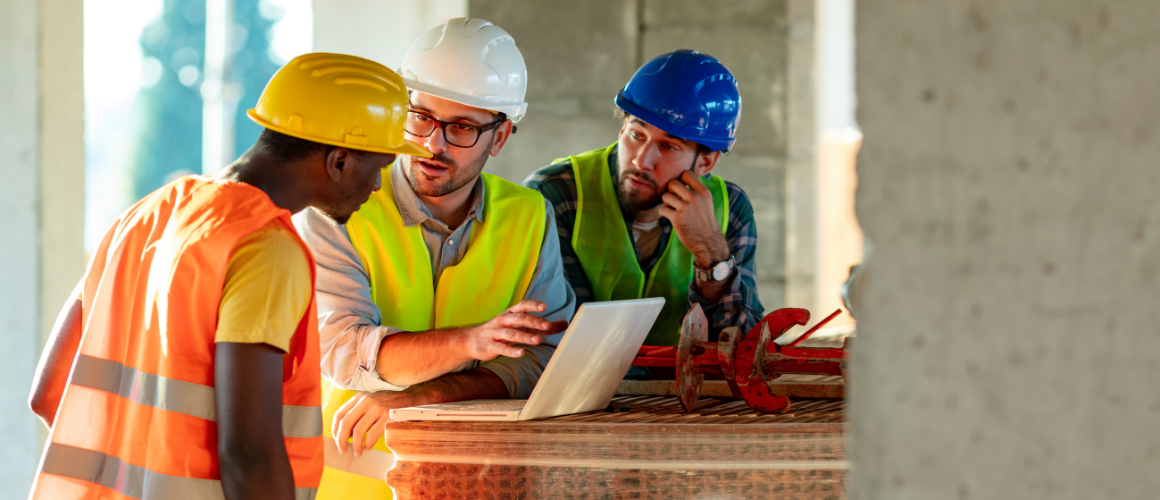
The Seamless Symphony of Architects, Engineers, and Tech
Think about the last time you walked by a tall building or relaxed in a city park. There's a lot more going on there. Every building or space has a story. It starts with an architect who comes up with the big idea. Then, an engineer steps in to make sure that idea can stand up in the real world. And don't forget about technology – it's like the special sauce that brings everything up to date.
It's a team effort, with everyone working together to make places that are safe, fun, and look great. This story will dig deeper into how architects, engineers, and tech folks team up. So, let's dive in and see how these folks work side by side to make the cool spaces we enjoy every day.
Historical Collaboration: Building on Shared Dreams
Way before our cities touched the sky and long before computers and fancy software came into play, architects and engineers had each other's backs. In the good old days, when an architect had a grand idea, the engineer stepped in to see how they could make it work in the real world.
Think of the old cathedrals and bridges. The architect would dream up a design, sketching out soaring ceilings or long spans. But the engineer figured out how to keep those structures standing tall year after year.
While they didn't have the tech tools we have now, they shared something timeless: teamwork. They understood that a dream building wasn't about one person's vision. It was about coming together, combining the creative with the practical, and turning ideas into lasting landmarks.
So, as much as things have changed with all our new tech, one thing remains the same. Architects and engineers, from way back when to today, have always been the ultimate dream team.

Setting the Stage: The Architect's Vision
Every great story starts with an idea, a spark. In the world of building and design, this spark often begins with the architect. Picture someone with a pencil in hand or fingers on a digital pad, dreaming of spaces that aren't just functional and touch the soul. These are spaces where moments happen, where memories get made.
Architects see beyond walls and roofs. They visualize how sunlight might pour into a room or a balcony, offering a quiet moment against a city's hustle. They imagine a kid's laughter echoing in a living room or an artist finding inspiration by a window.
But these visions, as beautiful as they are, need a solid ground to stand on. That's where our next heroes step in. But for now, let's nod to these dreamers, our architects, who start the melody that others will join in on.
The Backbone: Engineers Make Dreams a Reality
If architects are the dreamers, engineers are the doers. Think of them as the backstage crew in a play. While the story on stage is what captures hearts, it's the crew that ensures the show goes on without a hitch.
An architect might imagine a room with a grand, sweeping view. But who makes sure that room stands tall and safe? The engineer. They dive deep into the nitty-gritty: which materials to use, how to handle the weight, and where to put supports.
Have you ever seen a bridge that looks like a work of art? Or a building that feels like it defies gravity? Behind each of those wonders is an engineer, turning a vision into something tangible and touchable.
In a dance of imagination and practicality, engineers take the baton from architects and bring dreams to life. And in today's world, they have some excellent tech tools to help them.

The Digital Maestro: Technology
We live in a digital age, where our phones are bright, and even our homes can talk back. So, it's no surprise that the world of building and design has gotten a tech boost, too.
Remember when designs were hand-drawn on big sheets of paper? Architects and engineers can whip up creations on screens with just a few clicks. Tools like Building Information Modeling (BIM) have made turning a thought into a detailed plan easier.
And it's not just about drawing things. Technology helps folks in the building world talk to each other better. Misunderstandings? They're a lot less common now, thanks to clear digital blueprints. And predicting problems before they happen? Yep, there are apps and programs for that.
In short, technology is like the keyboard player in our building and design band. It's always in the background, but making sure the tune is just right.
Harmony in Motion
Let's paint a picture. Imagine an architect sketching out a sunny, open plaza. Nearby, an engineer calculates how to keep a fountain in the center flowing smoothly. A tech pro pulls up a tool at the following table, showing how people will move through this space on a busy day.
These three might seem like they're doing different things. But like musicians in a band, they're all playing the same song. Each one adds their own touch to make the final piece just right.
Here's a real-life example. Have you ever seen a green building that's cool but also great for the planet? The architect dreams it up, the engineer ensures it stands firm, and tech tools help measure how much energy it saves.
That's the beauty of it. Alone, each one is talented. But together? They create magic, making spaces where life happens and memories are born. It's true teamwork, and it's a sight to behold.

Sustainability and Eco-friendly Designs: Building for Tomorrow
These days, there's a lot of talk about going green. And it's not just a trend; it's a need. As our cities grow and our world changes, architects and engineers are teaming up to think about the future. They're asking: How can we build places that look good and take care of our planet?
Enter sustainability and eco-friendly designs. Architects dream up spaces that use natural light, have green roofs, or use materials that don't harm the earth. On the other hand, engineers make sure these green ideas work well, like setting up systems to save water or use less energy.
And with tech joining the mix, it's easier to track how a building uses resources or even how to recycle parts of old structures into new projects.
In a nutshell, it's all about thinking ahead. When architects, engineers, and tech come together, they're not just building for today. They're making sure we have a better, greener tomorrow.
Adapting to Urbanization: Shaping Cities for More Neighbors
City life is buzzing, drawing more and more folks every year. As fields turn to streets and small towns grow into busy cities, our building pros have their work cut out for them. They're tasked with fitting more people, homes, and businesses into our ever-growing urban spaces.
So, what's the game plan? Architects develop innovative designs to make the most out of every square foot. They're thinking up taller buildings, cozier parks, and spaces that can change as a city's needs do.
Meanwhile, engineers are ensuring these big ideas stand tall and safe. They provide that a high-rise can weather a storm, or a bridge can handle the rush-hour traffic.
And, of course, there's tech. With the latest tools, city planners can see how a new building might impact traffic or if a neighborhood needs more green spaces.
Together, these pros make our booming cities feel like home, ensuring they're ready for all the new faces and fun times ahead.
Case Studies: When Vision Meets Reality
The beauty of architecture and engineering lies in the stories of real-world marvels where vision, technical prowess, and technology converge.

First, there's the One World Trade Center in New York City. Architect David Childs had the challenging task of designing a structure that would not only stand as a memorial but also encapsulate the resilience and spirit of New York. With engineering firm WSP's expertise, the building incorporates advanced safety systems, eco-friendly design elements, and state-of-the-art technology. The 1,776-foot skyscraper is a testament to architectural brilliance and engineering innovations, driven by the memories of the past and the tech-forward vision of the future.

Then, moving over to the iconic Golden Gate Bridge in San Francisco. When chief engineer Joseph Strauss and architect Irving Morrow collaborated in the 1930s, little did they know they were creating a timeless marvel. With its art deco styling and unmistakable "international orange" color, Morrow's aesthetic vision complemented Strauss's structural genius. Even today, the bridge undergoes tech-driven retrofitting projects ensuring its strength against earthquakes, proving that old-world design and new-age engineering coexist harmoniously.
Real-world stories like these show that when architects, engineers, and technology come together, they don't just build structures; they craft legacies.
Conclusion: Echoes of Tomorrow
Have you ever stopped in a bustling city, looking up and feeling the rhythm of the structures around you? The melodies of design, technology, and construction surround us, but often, we're too caught up in our daily grind to hear their harmony.
Each structure isn't just brick and mortar; it's a dream woven into reality. The architect whispers a plan, the engineer lays down the beat, and technology amplifies the tune for everyone to hear. Together, they don't just shape our skyline; they carve the soundtrack of our modern age.
Imagine a future where our cities don't just grow but dance. As we march forward, with every beam laid, every virtual blueprint rendered, and every sustainable choice made, we're composing a tune for our grandchildren to sway to.
Let's not just build; let's create symphonies. Because the future isn't just about seeing—it's about listening to the echoes of our shared dreams.
Ensure your next architectural project stays on budget and on time. Uncover the BidLight difference today ➡️ www.bidlight.com

.png)